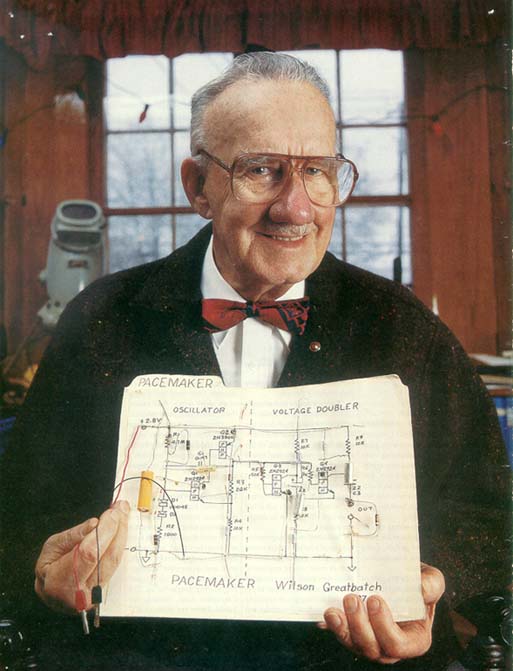23 September 2011 by Webredactie
 In the future people with brain disorders such as Parkinson’s disease, epilepsy and tinnitus (ringing in the ears) may be fitted with a smart, miniaturised neurostimulator. This stimulator, a prototype of which was recently developed and tested by TU Delft, may considerably reduce the symptoms for some patients. An article on this can be read in the latest edition of Delft Outlook, the TU Delft science magazine, published online today.
In the future people with brain disorders such as Parkinson’s disease, epilepsy and tinnitus (ringing in the ears) may be fitted with a smart, miniaturised neurostimulator. This stimulator, a prototype of which was recently developed and tested by TU Delft, may considerably reduce the symptoms for some patients. An article on this can be read in the latest edition of Delft Outlook, the TU Delft science magazine, published online today.
Mobile phone
‘A great deal of how we function is determined by electrical currents in our body’, says electrical engineer Marijn van Dongen of TU Delft. ‘We can use this to tackle a whole host of disorders, such as Parkinson’s disease, tinnitus and epilepsy, at a local level. Yet at the same time, this technology is still somewhat “medieval”. At present the neurostimulator is a device the size of a mobile phone which is implanted in the chest. It sends electric pulses via a cable to electrodes in the areas of the brain which show abnormal activity. The electric cables which run through the neck to the brain can break and cause infections. They also lead to the formation of scar tissue in the neck.
SINs
The current design of the neurostimulator is not conducive to further miniaturisation. In order to obviate the need for cables, a complete rethink of the design is needed. Van Dongen is working on this with a large number of colleagues from various knowledge institutes and hospitals, as part of the Smart Implantable Neurostimulators (SINs) programme that started in 2008. In that year, brain surgeons Dirk de Ridder and Eddy van der Velden of Antwerp University Hospital (UZA) contacted electrical engineer Wouter Serdijn of TU Delft. Serdijn is the SINs programme leader. They aim to have developed a cranial-implantable neurostimulator within the next ten years: a two-millimetre thick device measuring two square centimetres including the battery and antenna.
More natural
Challenges facing the researchers in reaching this goal include integrating all the separate components in a single chip, and doing away with the space-consuming capacitors. ‘The stimulators also need to be able to automatically detect when they need to generate pulses, by analysing signals in the brain, just as a pacemaker does in the heart’, says Serdijn. ‘Furthermore, the pattern of the pulses needs to be adjustable and have a more natural form.
Prototype
The TU Delft researchers have already developed and recently tested a prototype. ‘This was a preliminary test to see if our neurostimulator was in fact capable of generating a suitable neural response’, says Van Dongen. It turned out that it was, and the prototype will be further miniaturised in the coming years.For this study Dirk de Ridder and Eddy van der Velden tested the device on themselves: they had temporary electrodes implanted in their body and were able to control the stimulator via an iPhone app.
More information
The latest edition of Delft Outlook, TU Delft’s science magazine, to be published online on 23 September and in print on 26 September, will feature an extensive article on the research conducted by Marijn van Dongen and Wouter Serdijn.
Contact information
Marijn van Dongen (researcher), M.N.vanDongen@remove-this.tudelft.nl tel +31 (0)15-2783679
Dr Wouter Serdijn (SINs programme leader), W.A.Serdijn@remove-this.tudelft.nl tel +31 (0)15-2781715
Nienke van Bemmel (science information officer), n.vanbemmel@remove-this.tudelft.nl +31 (0)15-2784259
Links:
http://www.delftintegraal.tudelft.nl
http://www.braininnovations.nl


 In the future people with brain disorders such as Parkinson’s disease, epilepsy and tinnitus (ringing in the ears) may be fitted with a smart, miniaturised neurostimulator. This stimulator, a prototype of which was recently developed and tested by TU Delft, may considerably reduce the symptoms for some patients. An article on this can be read in the latest edition of Delft Outlook, the TU Delft science magazine, published online today.
In the future people with brain disorders such as Parkinson’s disease, epilepsy and tinnitus (ringing in the ears) may be fitted with a smart, miniaturised neurostimulator. This stimulator, a prototype of which was recently developed and tested by TU Delft, may considerably reduce the symptoms for some patients. An article on this can be read in the latest edition of Delft Outlook, the TU Delft science magazine, published online today. The paper "
The paper " PSSST! Mark your calendar!
PSSST! Mark your calendar!